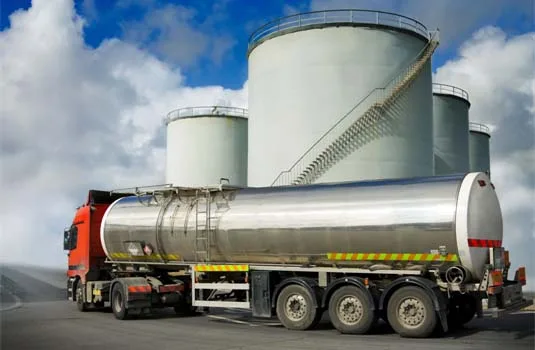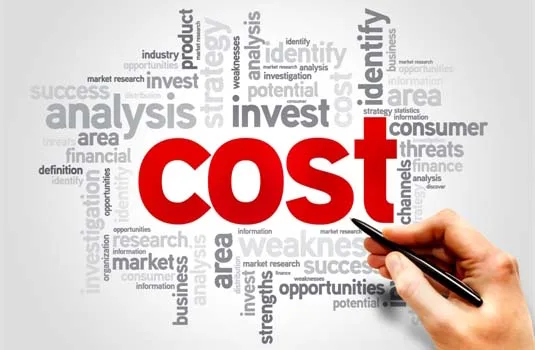Introduction
Diesel fuel is the backbone of the U.S. transportation system, with over 70% of goods being moved via diesel-powered vehicles. Diesel is refined from crude oil, much like gasoline and heating oil, but its pricing is notably volatile. Diesel prices fluctuate based on global market conditions, including supply and demand dynamics. For instance, the 2008 global economic crisis saw a massive dip in prices as demand fell, with the average price per gallon dropping from $4.76 in July to $1.43 in November.

Calculating Retail Price of Diesel Fuel
Several factors contribute to the retail price of diesel, including:
- Cost of Production and Delivery: Diesel is produced through fractional distillation of crude oil. The associated costs are broken down into:
- Cost of crude oil
- Refinery processing costs
- Marketing and distribution costs
- Operating Cost of Retail Station: Diesel can be sold by independent stations or those operated by refineries. Costs here depend on:
- Local market conditions
- Location
- Marketing strategies
- Federal, State, and Local Taxes: As of 2008, federal excise taxes on diesel were 24.2 cents per gallon, while state taxes averaged 22.0 cents per gallon.
Global Market Factors Affecting Diesel Fuel Prices
Global factors such as geopolitical events, weather disturbances, and supply/demand imbalances significantly affect diesel prices.
Supply and Cost of Crude Oil
The price of crude oil is crucial, as it forms the basis of diesel fuel pricing. Countries in the Organization of Petroleum Exporting Countries (OPEC) control a significant portion of the world’s crude reserves and production. Disruptions, like the 1973 Arab Oil Embargo or the 2003 Iraq invasion, can cause severe price spikes.
Worldwide Production Capacity & International Demand
Refineries in the U.S. operate at high capacity, often at 90% or more. Tight global refining capacity, coupled with increasing demand, especially from Europe and Asia, affects fuel prices.
Imbalances in Supply & Demand
Shortages at refineries or delayed imports can cause fuel prices to spike, particularly in transportation-heavy seasons, like before holidays when diesel consumption rises.
Seasonal Variations
Diesel demand fluctuates seasonally, with spikes in fall and winter due to increased agricultural and transportation activities. Prices tend to dip in late winter and summer as gasoline demand rises.
Geographic Variations
Price disparities exist based on location. Retail stations further from refineries typically charge more to cover transportation costs. Local market conditions such as the number of stations and traffic also impact pricing.
Reasons for Diesel Price Increase Worldwide in Recent Years
In the U.S., diesel prices were historically lower than gasoline until recent years. For example, in 1998, diesel was priced nearly the same as gasoline. However, by 2008, diesel was significantly more expensive. Several key factors contributed to this shift:
Fuel Production
Refineries produce more gasoline than diesel, meaning less diesel is produced per barrel of crude oil. This makes diesel more expensive to refine.

Increased Demand for Diesel
Internationally, particularly in Europe and Asia, the demand for diesel surged. European countries, in particular, favored diesel over gasoline, leading to higher prices.
Changes in Worldwide Supply Balances
Increased demand for diesel from regions like Europe, combined with higher exports from the U.S., strained supply chains and increased costs.
Stringent Environmental Standards
In 2006, new regulations requiring the production of ultra-low sulfur diesel increased production costs. Refineries had to adopt new, more expensive processes to meet these standards.
Fuel Taxes
The federal government imposes a 24.4-cent per gallon tax on diesel, higher than gasoline taxes. This adds to the overall cost of diesel.
A Closer Look at Price Trends in 2008
In early 2008, diesel prices skyrocketed due to several factors, including the global economic boom and geopolitical tensions in oil-producing regions. Crude oil prices reached $147 per barrel in July. However, as the global recession took hold and demand dropped, fuel prices plummeted. By the end of 2008, diesel prices had fallen to $2.45 per gallon.
Forecast for the Years Ahead
According to the U.S. Energy Information Administration (EIA), diesel prices are expected to remain low through 2009 and 2010, largely due to weak demand and a surplus of production capacity.
Projected Price Trends
Crude oil prices are forecast to average $43 per barrel in 2009 and $55 per barrel in 2010, leading to diesel prices averaging around $2.27 per gallon in 2009.
Projected Consumption Trends
Global diesel consumption is expected to drop in 2009, but a slight rebound is expected in 2010. In the U.S., consumption in 2008 dropped by 1.2 million barrels per day, with an additional decline expected in 2009.
Projected Supply Trends
Non-OPEC nations’ crude oil and diesel supply fell by 340,000 barrels per day in 2008. Supply is expected to increase slightly in 2009 and 2010, but risks remain due to geopolitical instability and project delays in key regions.

Conclusion
Diesel fuel prices are shaped by a complex interplay of factors, from crude oil prices to global demand and environmental regulations. While recent years have seen sharp fluctuations, trends indicate a continued decline in prices over the near term, contingent upon the global economic situation and supply dynamics.